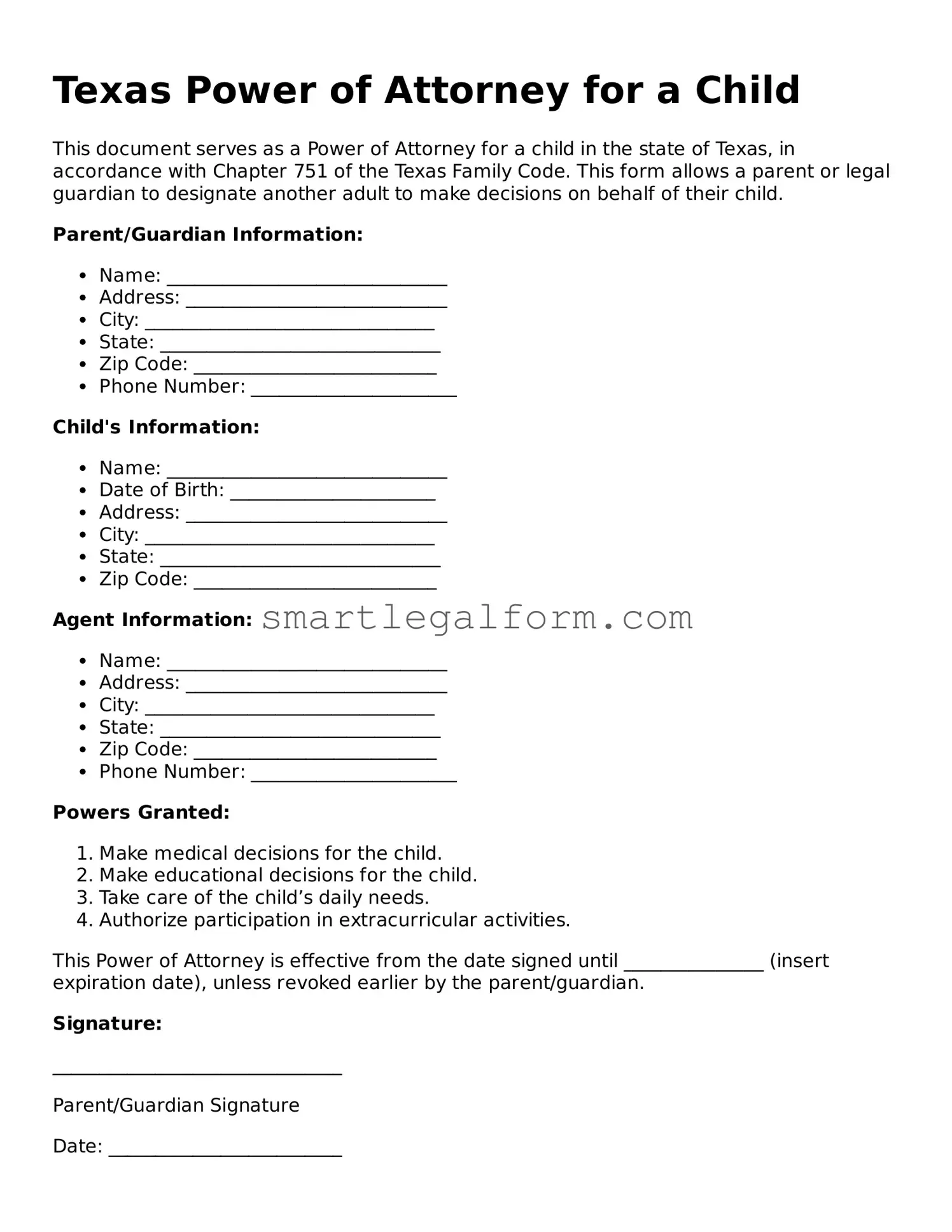Texas Power of Attorney for a Child
This document serves as a Power of Attorney for a child in the state of Texas, in accordance with Chapter 751 of the Texas Family Code. This form allows a parent or legal guardian to designate another adult to make decisions on behalf of their child.
Parent/Guardian Information:
- Name: ______________________________
- Address: ____________________________
- City: _______________________________
- State: ______________________________
- Zip Code: __________________________
- Phone Number: ______________________
Child's Information:
- Name: ______________________________
- Date of Birth: ______________________
- Address: ____________________________
- City: _______________________________
- State: ______________________________
- Zip Code: __________________________
Agent Information:
- Name: ______________________________
- Address: ____________________________
- City: _______________________________
- State: ______________________________
- Zip Code: __________________________
- Phone Number: ______________________
Powers Granted:
- Make medical decisions for the child.
- Make educational decisions for the child.
- Take care of the child’s daily needs.
- Authorize participation in extracurricular activities.
This Power of Attorney is effective from the date signed until _______________ (insert expiration date), unless revoked earlier by the parent/guardian.
Signature:
_______________________________
Parent/Guardian Signature
Date: _________________________
Witnesses:
_______________________________
Witness Signature
Date: _________________________
_______________________________
Witness Signature
Date: _________________________
